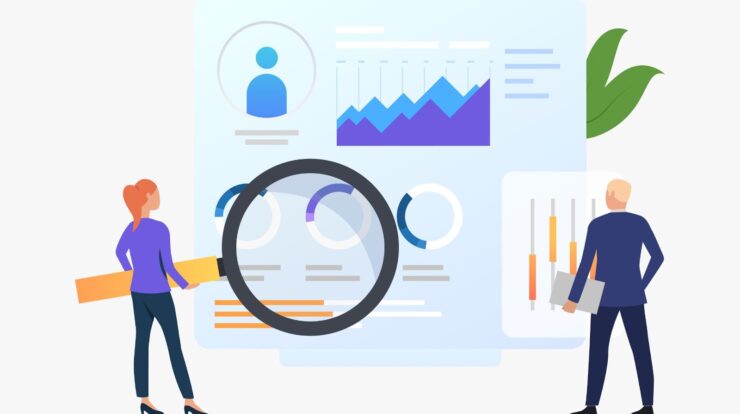
Many businesses have a software audit done at least once every two years. This is because they know that it is important to ensure their business is up-to-date with the latest technology in order to remain competitive in the marketplace. The following post will discuss what standard approaches are used for software audits and why these approaches should be followed by all companies.
Comparing the differences between software audits and reviews
A software audit is a comprehensive and in-depth review of the organisation’s IT infrastructure that focuses on determining how well it meets industry standards. On the other hand, a software review typically only examines one area at a time for compliance with best practices. You may also hear these reviews called “gap analysis.”
The most common things that need to be considered when organisations are preparing for an audit is what they need to include in their IT infrastructure, the types of data and information that must be reviewed (both on-site as well as off-site), and how long a manual review will take.
A software audit should cover every aspect of your organisation’s computer systems, including data management, user authentication, and security.
There are four main types of software audits: compliance, security, functionality/performance, licensing, and software quality.
Compliance audit
A compliance audit is intended to ensure that your organization is compliant with applicable laws, regulations and standards.
Auditors will look for documentation of policies and procedures that are followed by all personnel as well as any documents related to management reviews, such as quality assurance plans or risk assessment reports. The auditor will also examine the processes used by individuals who manage data on behalf of the company.
Security audit
Security audits are conducted to see if a company is taking necessary precautions to protect against malicious attacks from outsiders or other unauthorised users.
Software audit company will investigate the risk of cyber-attacks and threats related to the loss, misuse, and abuse of data stored in your systems as well as how you are protecting data gathered about customers during transactions with third parties like partners and vendors.
Functionality/performance audit
A functionality/performance audit will examine the software to make sure it does what you want and that there are no glitches. Such audits help companies determine whether the software is meeting the objectives for which it was purchased.
Licensing audit
A licensing audit typically involves reviewing the company’s license agreements to ensure they are in compliance with the terms and conditions of those licenses. This allows business owners to make sure that they’re not violating any conditions that might otherwise lead to fines or other sanctions.
Software quality audit
Software quality audits are usually done when a company is developing an internal tool that is meant to be used solely within the business. To determine whether or not it’s useful, an audit will evaluate how well a software program performs against certain criteria, such as its stability and reliability.
Software audit approaches
There are a couple of ways one might go about auditing.
Manual audit
In a manual audit, the auditor examines whether the software is the company is using is meeting the criteria for which it was purchased, such as Return on Investment, the company’s business objectives, and other metrics.
Such audits are typically time-consuming; it could take weeks or months to complete one audit for a large enterprise with multiple systems of record. The auditor may also need to understand the software well enough in order to be able to identify whether there’s anything out of order that needs attention. This approach is slowly going obsolete, as, in the modern era of technology, it’s difficult to conceive that you need someone manually going through a system in order to find anomalies. Instead of doing it by hand, auditors can resort to automated tools that can identify weak points with little to no human intervention.
Automated audit
An automated audit is usually done with the use of software that checks for anomalies in the system. The auditor only needs to set up some parameters and let it run, as opposed to manually going through every single element of the infrastructure, which can be tedious and time-consuming. As a result, an automated audit is usually much faster than one done by hand because the computer does most of the work.
Third-party audit
Large enterprises that have enough funds usually hire an external company to audit their systems. In this type of audit, the auditor is usually not a member of the organisation being audited and has no access rights.
Internal or self-audit
In some cases, organisations will perform audits themselves in order to validate certain processes are working as they should be. At times, a third-party provider might not know the intricacies lying behind the infrastructure’s inner workings. For this reason, an internal audit is sometimes preferred.
What to take into consideration when choosing an auditing approach?
Budget
This is the most obvious factor to take into account when choosing an approach. External audits are typically pricier and, therefore, usually reserved for larger organisations with budgets that allow them this advantage.
The complexity of the architecture
If the architecture is particularly complex, it can be hard to understand how everything interacts and where there might be a risk of breach. In this case, an external audit might not provide all information required due to a lack of knowledge about what’s going on inside the system.
Available toolset and workforce
If your company relies on a specific toolset and the workforce is used to working with it, you might be able to do an internal audit without outsourcing. On the other hand, if you lack the necessary staffing, an external audit is a better option.
Conclusion
Software auditing is a must in any company that relies on software to provide its product or service. While this may seem like an intimidating task, there are many ways to approach it. Depending on the size of your company, you might need a different strategy and make use of either internal or external auditing solutions. Conducting due diligence and other assessments will show you what approach is the best for you.


